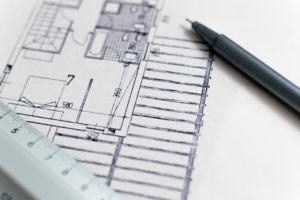In a professional education class about learning theories, the college professor or instructor usually starts by defining learning and learning styles. Learning definition and concepts surrounding learning usually come out in the LET.
What is Learning?
Learning can be defined as the process of acquiring knowledge or skills.
A child will continue to learn regardless if he or she goes to school or not. Schooling allows the society to influence the learning of children by guiding what they observe and experience on a daily basis. Learning does not start or stop in the school, however. It continues throughout the waking hours of the child. The things and events that a child sees and hears all contribute to how he or she sees the world.
Here are some of the different methods by which a child may learn:
- Experience
- Observation
- Reading about experiences of others
- Influence of other members of the society
- Practice and drills
Forgetting
Forgetting is the opposite of learning. It happens when the information was not processed properly by the learner. It could also happen when an already established information decays in the learners mind because of lack of active use.
A learner may also forget an information when another set of knowledge is preventing learning or retention. This concept is called Learning Interference.
Two Types of Learning Interference
- Proactive Inhibition
- Retroactive Inhibition
This type of learning interference happens when learners find it difficult to learn new concepts because of existing knowledge that contradicts the new information.
Example:
A student learned from his parents that Santa Clause circles the earth in just a few hours and visits all children to deliver presents. In his Grade 1 class, he hears that the fastest jet plane in the world cannot accomplish this feat because of the vastness of the Earth. Accepting the new information from the science class may also shatter the illusion that parents are always correct. The child’s firm belief in Santa Clause makes it difficult for him to learn a new concept.
In this type of learning interference, new information “replaces” concepts that were learned in the past, making it harder to recall them.
Example:
In a Grade 2 English class, Jeoff learns of the rule of adding ‘ed’ or ‘d’ to verbs when they are in the past tense. In the past, Jeoff already learned that the past tense of the word ‘buy’ is ‘bought’. Upon learning of the new rule, Jeoff is having trouble remembering the past tense of buy.
Learning Styles
Modern teachers and trainers also employ the concept of learning styles to enhance the learning experiences of students. The concept is based on the premise that learning happens differently for each individual. Each learner has his or her own preferences on how to take in, process and recall information. The Learning Style Concept attempts to group these preferences.
Types of Learning Style:
- Visual Learners
- Auditory Learners
- Kinesthetic Learners

Knowledge Acquisition: Visual learners rely heavily on written and printed materials for taking in information. They prefer to read books and view diagrams when studying.
Retention Techniques: This type of learner will remember best if they create their own diagrams, reviewers with info-graphics of the body of knowledge being studied. They can process information better if it is presented to them through a visual medium like videos and pictures.
Knowledge Recall: This type of learner also relies on memory of their vision when they process information. A student for example, aims to remember the position of the word in the page that he read to answer a test question.
Knowledge Acquisition: Auditory learners excel when knowledge is presented through sound. They have advanced active listening skills. When reading a book, an auditory learner may read the book aloud to increase the probability of remembering the information.
Retention Techniques: Music and other auditory tools are better suited for auditory learners. When learning a new concept, a teacher in a class of auditory learners may achieve better results with audiobooks. When creating mnemonic devices, auditory learners also retain knowledge better when they sound good (example: rhyming, assonance and alliteration)
Knowledge Recall: Students with advanced auditory learning skills may recite the sounds they remember when studying. They may also speak out the words of the mnemonic devices that aided them in memorization.
Knowledge Acquisition: Kinesthetic learners thrive with presentations that include movement. When presenting concepts to this type of learner, a teacher needs to show moving pictures rather than just text on the surface. Acting out concepts and live demonstrations also work for the kinesthetic learner.
Retention Techniques: When studying, a kinesthetic learner may move around and use hand gestures to increase the possibility of retention. Instead of creating mnemonic devices, a kinesthetic learner may use hand movements. When imagining pictures to aid memorization, a kinesthetic learner will retain memory of movements to aid them in remembering the concepts being taught.
Knowledge Recall: A kinesthetic MAPEH student for instance, may do dance steps while taking an exam to answer a question about dance. When imagining pictures to aid memorization, a kinesthetic learner will retain memory of movements.
Classroom Application:
Though the concept of learning styles try to define the preferences of learners when acquiring, retaining and recalling information, it cannot be used to totally classify students. The goal of the teacher is to develop all types of learning skills in students. A visual learner for instance, will be able to retain information better if he or she uses techniques also used by auditory and kinesthetic learners.
The teacher’s goal on the other hand, is to add variety to his or her methods of presenting information to maximize retention in all types of learners. Teachers can do this by including different types of activities that cater to all learners in their lesson plans, rather than just delivering discussions all the time.
Next: Practice your LET taking skills with our LET Practice Tests